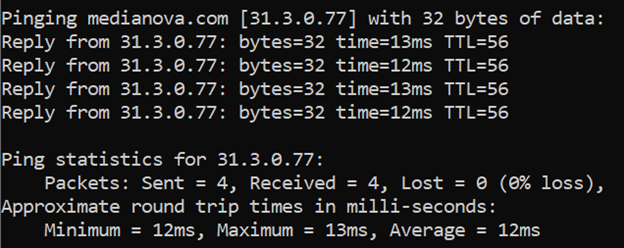

All You Need to Know About Round-Trip Time
What exactly is RTT?
Round-trip time (RTT) is a networking metric that measures in milliseconds the time it takes for a data packet to be sent and the time it takes for an acknowledgment of that signal to be received. The propagation times for the paths between the two communication endpoints are included in this time delay. As you can imagine, a CDN’s primary goal is to reduce it. Also, latency improvements can be measured by reducing RTT.

Ping, Latency and now the RTT. It brings out this question: Are they the same?
The ping utility, which is found on almost every computer, is a method of estimating round-trip time. Ping tests, on the one hand, are typically performed within a transport protocol that employs ICMP packets. Network latency, on the other hand, is closely related, but it is not the same as RTT. Latency is the amount of time it takes for a data packet to travel from one endpoint to the other. The processing delay at the echo endpoint is included in Round Trip Time.
What is a good RTT?
Every application will have its own set of requirements, and it is nearly impossible to give a specific time frame. What is tolerable in one use may be intolerable in another. Still, we can approximately say that your users should have an RTT of at least 95ms for normal application usage and a maximum of 190ms before your application degrades the quality of your service.
What are the most prevalent factors influencing Round Trip Time?
Potential elements that may have an impact on RTT are distance, local area network traffic and response time.
- Distance: CDN optimized connections can minimize the number of hops necessary to reach a destination; nonetheless, network connectivity is limited by distance.
- LAN Traffic: Because of the quantity of traffic on the local area network, connections might be barriers before they ever reach the wider Internet network.
- Response Time: The time it takes a target server to reply to a request is determined by its processing capability, the number of requests processed, and the type of the request. As a result, a longer server response time raises RTT.
Reducing Round Trip Time with a Content Delivery Network (CDN)
A content delivery network (CDN) is a network of strategically positioned servers, each carrying a duplicate of a website’s content. It is capable of addressing the following elements that impact RTT:
First of all, each PoP that contains cached copies of site content is responsible for interacting with site users in their immediate location. There are less signal transmission distance and network hops to reach a server. Also, on a PoP in the user’s geographic area, CDNs cache HTML, media, and even dynamically generated content (DGC). Users’ requests can be handled by a local PoP, decreasing RTT.
Moreover, TLS 1.3 decreases web page latency by shortening the RTT required to connect the client and server. TLS 1.3 has been updated with new digital signature algorithms. With 1.3, the first support for 1-RTT Handshake and 0-RTT were added. This feature is provided to our customers free of charge on the Medianova CDN platform.
Last but not least, another impact worth mentioning is speeding up server response times and reducing RTT by using Anycast. In most cases, Anycast directs incoming traffic to the nearest data center with less network congestion during peak traffic periods.
At Medianova, we focus on all the ways to accelerate, enhance and secure your content delivery. Get in touch with us to learn more about how Medianova can help you deliver the best online experiences.




